Remember how I told you about C who took me around the Louvre and told me wonderful stories behind some of the sculptures there? You can read about that here and here. Well, she is trained in the art of Museology from the prestigious École du Louvre and wanted to faire (= do) an experiment on me with the majestic Palace of Versailles. Now, who in their right mind would say no to such an experiment!
The experiment
We met up at 9h30 at the La Défense metro station and from there took the SNCF to Versailles Rive gauche. It was a pleasant day to be outdoors. We were hoping for a day just like this for our walk in the Palace gardens.
There is a lovely café on the property, but we were on a mission to waste no time and just immerse ourselves in the chateau and its garden. So we skipped going to the café and planned to pick up something on the way to the château. C knew a fantastic little bakery from where we packed us some baguette sandwiches and dessert.
Château de Versailles
Gates of Gold
Don’t know about you, but I was shocked to learn that the wrought iron gates of the Palace of Versailles are painted with a coat of REAL GOLD. About 100,000 gold leaves were used. No kidding. Thus, the scratches you see on the surface of the rods (pictured below). I was told, often people ‘scratch’ out some gold from gates! How ridiculously cheap is that!! Next time you visit this place and spot someone stealing gold, ask them to stop, s’il vous plaît (= please)!
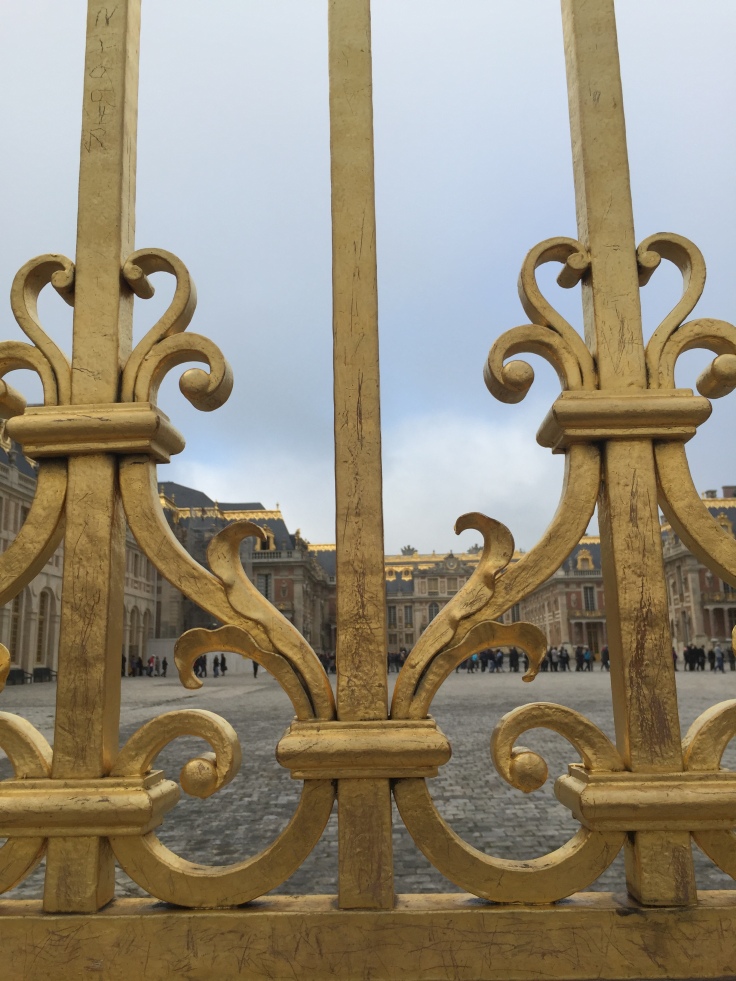
The entrance is magnificent. Large sculptures overlook the gates and gaze upon those who enter the palace of luxury. The gold reminds me of a shade of sunrise at dawn. So appropriate considering Versailles was the seat of power, of Louis XIV also known as the Sun King or le roi-soleil.
King Louis XIV – a copycat?
C told me an interesting anecdote about the making of this palace. The château de Versailles is a complete copy of the château Vaux-le-Vicomte. A magnificent abode made by and belonging to Nicolas Fouquet – the king’s finance minister. As soon as King Louis XIV came to power, he first fired Fouquet, on grounds of misappropriation of public funds, confiscated his newly built chateau and hired those who constructed Fouquet’s chateau.

Louis le Vau, André le Nôtre and Charles le Brun were instructed to bring to life an even better and even mightier version of what they made for Fouquet. Thus, we have today the Château de Versailles and its gardens.
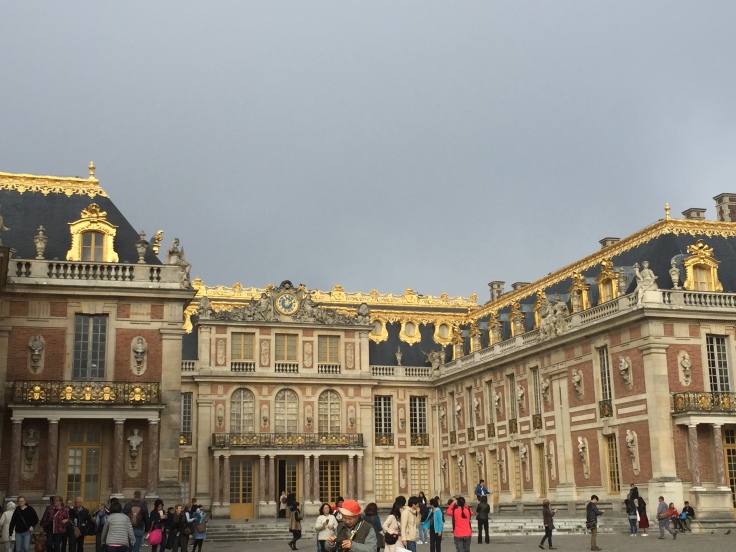
In 2013, artists and brothers, Roman and Erwan Bouroullec in association with Swarovski designed the chandelier that adorns the grand staircase in the palace. Made with crystals in a very contemporary style, the functional installation bridges the past with the present.


Apotheosis of Hercules:
On the first floor of the palace, situated in the Hercules room, is the painting on the ceiling of Apotheosis of Hercules.
In French monarchy, it was believed that the King was appointed by God, and upon coronation became His lieutenant. King Louis XIV wanted to constantly remind everyone of his divine purpose. And so a painting to signify his power was commissioned.
François Le Moine, was chosen to convey this message through his painting. He did it with such great dedication, that he pretty much got the whole thing done himself (as opposed to delegating some tasks). As a result this masterpiece took three years to complete and left him thoroughly exhausted.
But his work didn’t go unnoticed. The king was impressed that Le Moine depicted him as Hercules and that too in such an exquisite way. Soon enough, the King appointed him as his personal painter. The pressures of the job followed by the almost ‘apotheosis’ of his position to the highest possible in the court of the king, got too much for Le Moine, which eventually led him to commit suicide.
I finally found a picture that captures the ceiling in its entirety.
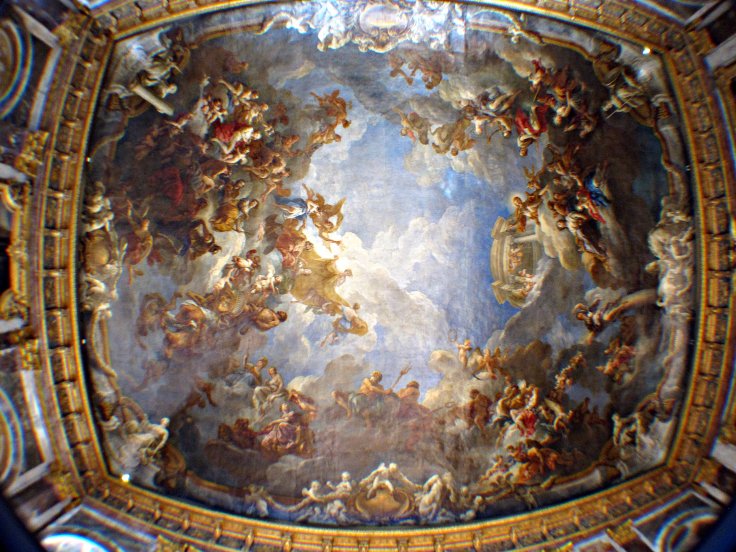
The Royal Chapel of Versailles
The one you see in the palace today is actually the fifth chapel. As time and need evolved, so did the chapel. Every morning at 10 am the king and his family attended mass. The public sat in the nave below. The beautiful organ you see in the picture below was made by the renowned Clicquot family.


The King’s Apartments and the Hall of Mirrors
The tour around the apartments begins at the Salon of Hercules. It is then followed by:
- The room of Abundance
- Salon of Venus
- Salon of Diane
- Salon of Mars
- Salon of Mercury
- Salon of Apollo
- The War room
Then comes the uber famous Hall of Mirrors. Think Dior commercials! Unless you get a private viewing of the place, you will always find yourself surrounded by a crowd here.


Olafur Eliasson Installation in the Hall of Mirrors:

The Hall of Mirrors gives way the King’s chamber. This of course is his official bedroom, where his rising and retiring ceremonies were held every morning and night for his subjects. There apparently is another more private room where the king actually slept.
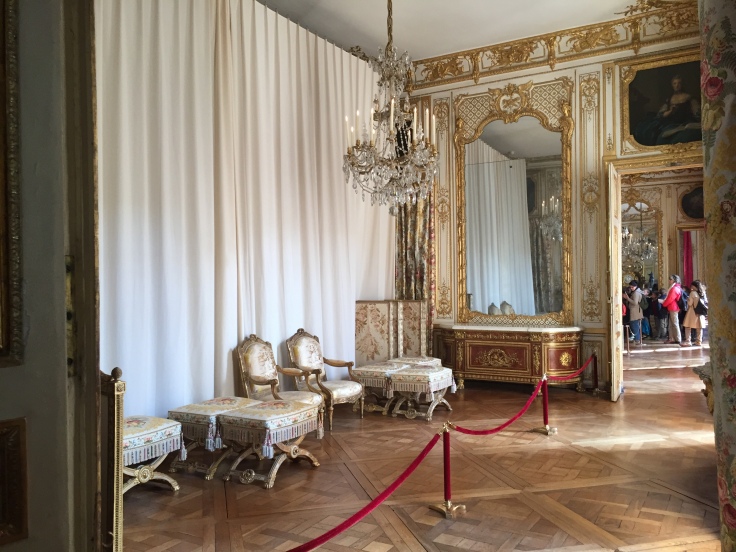

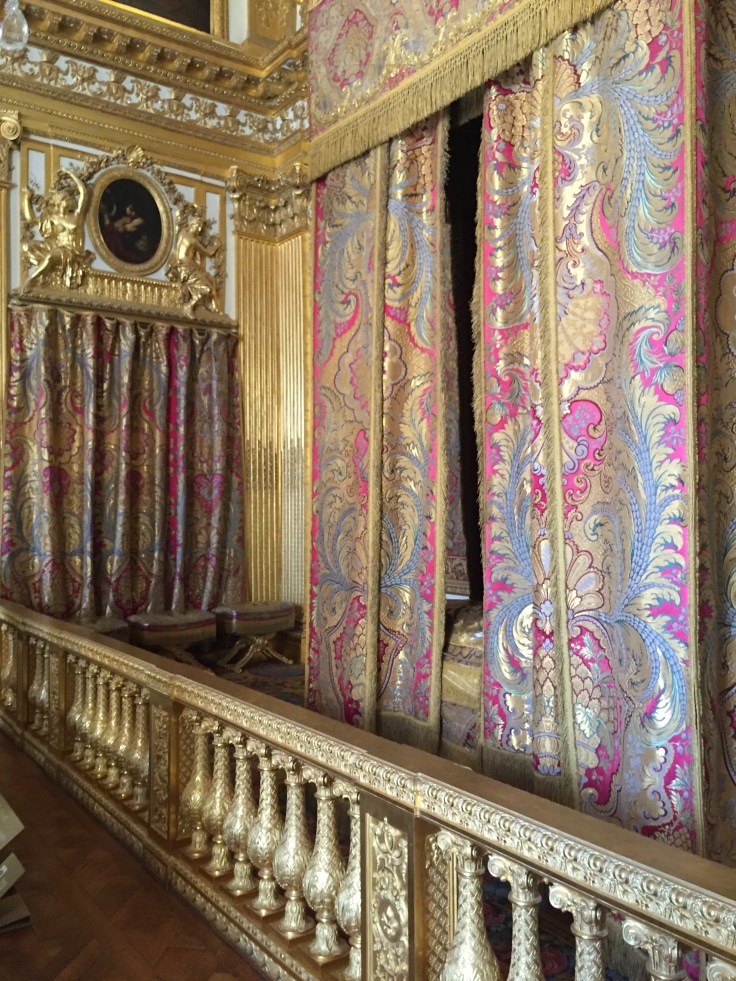
Loggia of the Queen’s staircase
This passage or loggia was the busiest little vestibule during the King’s reign as it gave access to his apartments and to the Queen’s staircase which further led to her apartment.

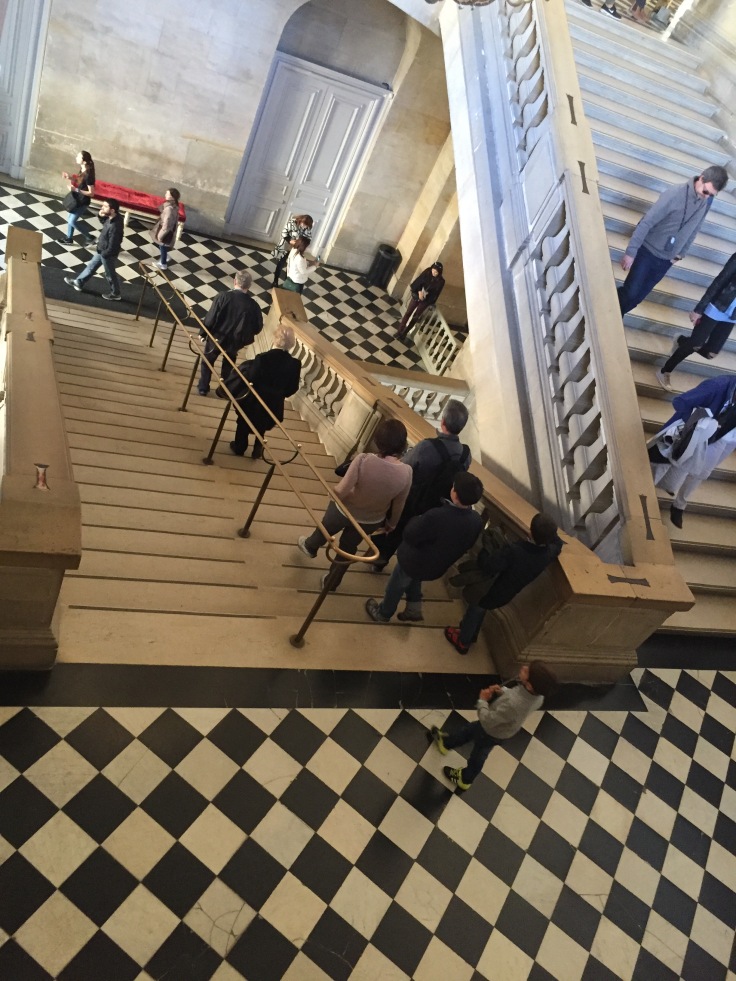


The Gardens of Versailles
The gardens never seem to end. They go on and on capturing beauty in the form of fountains, topiary, lakes – it’s astonishing.
Access to the gardens is free, except for the musical fountains. You can get in FOC (free of cost of course) via Cour d’honneur and through the Courtyard of Princes. Just ask around.
There is restricted access on certain days and you must take a look at the website before you go.







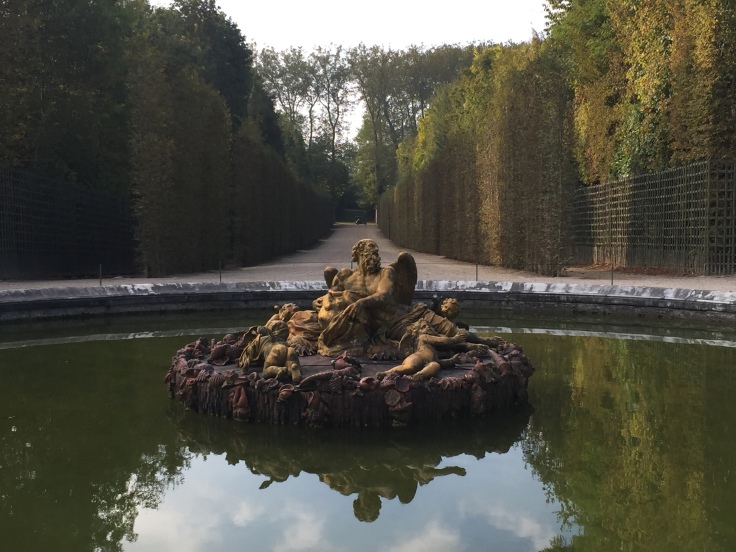

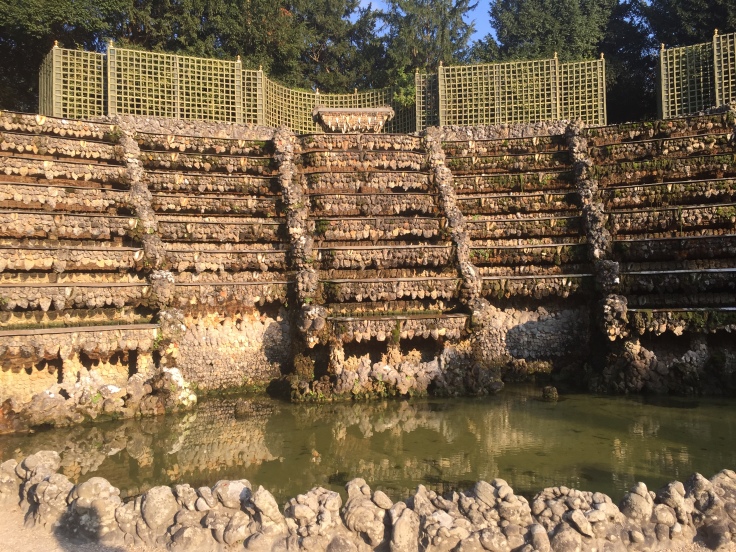
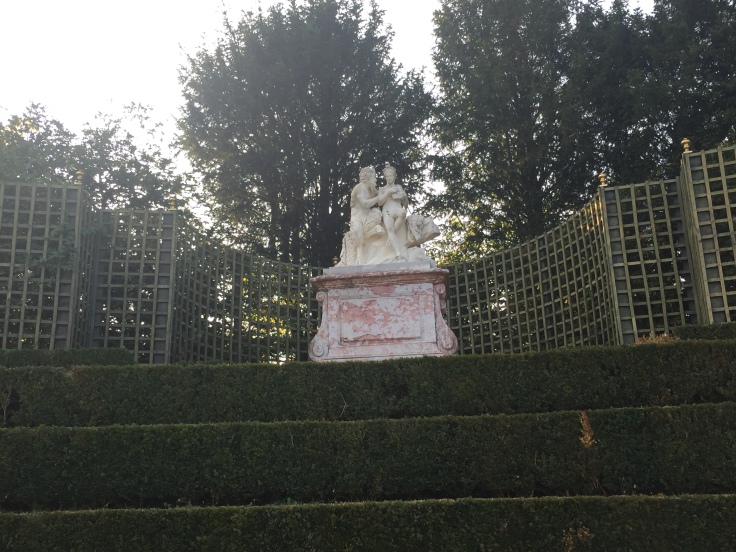
The Petit Trianon
King Louis XV had this cosy little chateau made for his favourite mistress, Madame du Pompadour. It is about a 20 minute walk from the Palace or maybe a ten minute carriage ride. Madame de Pompadour died before its completion and was eventually given to another of Louis XV ‘s mistresses – Madame du Barry.
Now Madame du Barry and Marie Antoinette did not have a very good start. They had met at a dinner party a day before Antoinette and Louis XVI’s big wedding. Being a child of only 14 years, the young Antoinette was told that beautiful Barry was employed to give pleasure to the King. Antoinette was determined she could do the same. It was only when someone clearly explained what that meant, did Antoinette understand the profession of pleasure.
Eventually, Antoinette got Louis XVI to give her the possession of the house to escape the strict etiquette followed at Versailles. She was so happy with the place that she began living there more frequently. She even got the King to agree to visit her only when invited.



The temple of Love
The simple yet peaceful temple, along with almost all of the other structures, the gardens and the hamlet in The Trianon, was the work of Richard Mique (in rumoured association with French painter, Hubert Robert). Mique was the chief architect to Louis XVI, he was highly favoured by Marie Antoinette, and was the last in his profession to witness structural changes at Versailles, before the French revolution put an end to everything.


The English Gardens


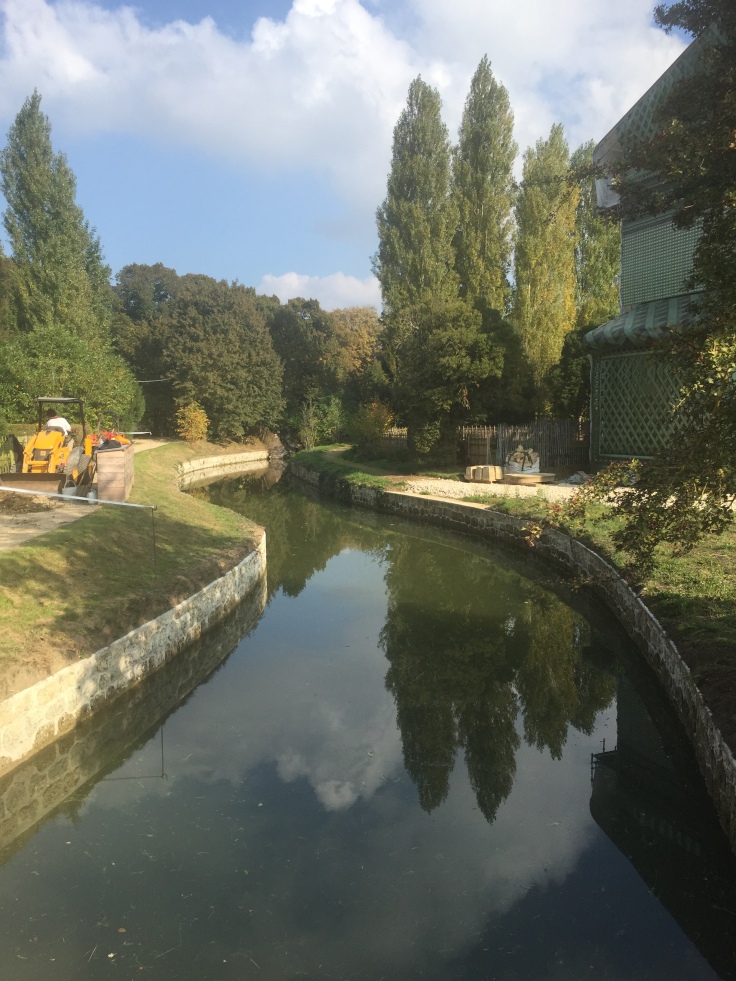
The farm and hamlet
The Hamlet was built in 1783 so that Marie Antoinette could escape her opulent reality and live a pauper’s dream. However, outsider’s thought this to be a mockery of the King’s subjects who lived in utter poverty all over France.
Whatever the motive, today it homes some farm animals and is a pleasant break from walking around in the manicured gardens of the Palace.







Having been to the Versailles twice this year, I still haven’t seen half the things this treasure trove has to offer. It’s impossible to do so in such little time.
On a personal note, I was pleasantly surprised by the gardens and Marie Antoinette’s Trianon. If I had known earlier, I’d probably focus less on the chateau itself and more on the gardens. Ofcourse do pop by the palace and don’t miss the hall of mirrors, but keep a watch on the clock.
The Petit Trianon has such a personal feel to it, almost making the Queen seem like just another woman (with a*@#%load of money). For the first time, I felt some form of sympathy for her. Maybe she wasn’t as bad as they made her to be? Maybe, her circumstances made her the pompous Queen as portrayed by history?
C and I mulled over it with an Opéra in one hand and a café Noisette in the other.
Happy travels!

Leave a comment